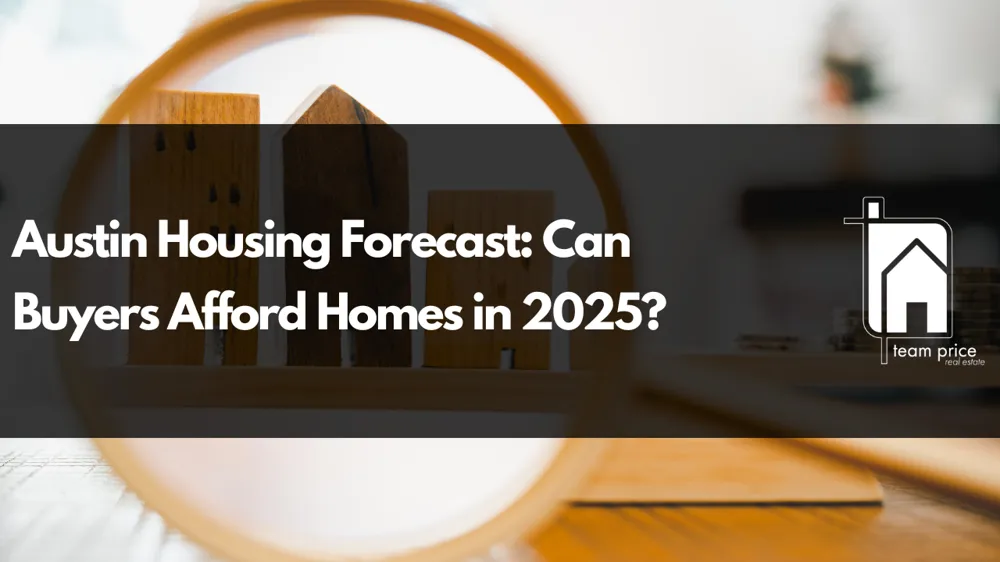Austin Housing Forecast: Can Buyers Afford Homes in 2025?
Published | Posted by Dan Price
Austin Real Estate Report: Affordability Trends in 2025
Housing affordability in Austin has been a central concern for buyers, sellers, and investors throughout the last several years. With home prices peaking in 2021–2022 and mortgage rates remaining elevated, the cost of carrying a home has shifted dramatically. Using historical affordability ratios and monthly payment data, we can see how 2025 compares to previous cycles and what that means for today’s Austin housing market.
Market Overview
As of August 2025, the median sold price-to-income ratio in the Austin MSA sits at 4.05. This is the lowest August reading since 2019 and represents a marked improvement from the 2021–2022 affordability crisis, when ratios climbed above 5.75 at the peak. While still 6.9% higher than the long-term average of 3.79, this year’s figures indicate affordability is gradually recovering. Buyers now need just over four years of median household income to purchase a median-priced home, compared to nearly six years at peak.
Monthly payments tell the same story. In August 2025, the typical PITI payment (principal, interest, taxes, and insurance) on a median-priced Austin home with 20% down was $3,323. This equates to 36.7% of the median household income being spent on housing. For comparison, in May 2022 at the height of the cycle, households were allocating 47.2% of their income toward housing costs.
Historical Context
For most of the early 2000s, the Austin real estate market maintained a stable affordability ratio between 3.0 and 3.5, meaning homes were within reach of average income earners. Beginning in 2014, ratios edged higher as home prices rose faster than income growth. By 2020, the market crossed into historically high territory with ratios over 4.0, and the pandemic-driven surge pushed affordability to record lows by 2021–2022.
Today’s 2025 market is clearly more favorable than those peak years. The August 2025 ratio of 4.05 is not only the best August since 2019 but also down nearly 30% from the April 2022 high of 5.75. However, affordability has not yet fully normalized, remaining slightly above the long-term baseline.
Housing Costs and Income Pressure
The affordability squeeze in Austin is reflected in the monthly burden on households. The long-term average has been about 30% of income directed toward housing. In recent years, that figure ballooned into the 40–47% range, far above traditional lending standards. While 2025 has seen this share fall back into the mid-30s, Austin families are still spending a greater portion of their income on housing than they did historically.
FAQ Section
How expensive is housing in Austin?
Housing in Austin remains more expensive than the historical norm, but it is less extreme than during the peak years. In August 2025, the price-to-income ratio was 4.05, just 6.9% higher than the long-term average of 3.79. This means homes cost just over four years of median income, compared to nearly six years at the 2021–2022 peak.
What salary do you need to live in Austin, Texas?
With a median monthly mortgage payment of $3,323 in August 2025, households need an income of roughly $108,000 annually to keep housing costs within 37% of gross income, which is where Austin sits today. This aligns with actual affordability data showing 36.7% of income allocated to housing.
What is the average monthly cost of living in Austin, Texas?
For homeowners, the primary monthly cost is housing. In August 2025, the average monthly PITI payment for a median-priced home was $3,323. When combined with typical utilities, transportation, and food costs, the overall monthly living expense in Austin for homeowners exceeds $5,000, with housing representing the largest share.
Are housing prices dropping in Austin, Texas?
Yes, relative to the 2021–2022 peak. The affordability ratio has improved from 5.75 in April 2022 to 4.05 in August 2025, and the monthly housing payment has fallen from $3,742 in June 2022 to $3,323 in August 2025. While prices remain above long-term averages, the downward trend since 2022 confirms that Austin housing costs have eased.

Related Articles
Keep reading other bits of knowledge from our team.
Request Info
Have a question about this article or want to learn more?


